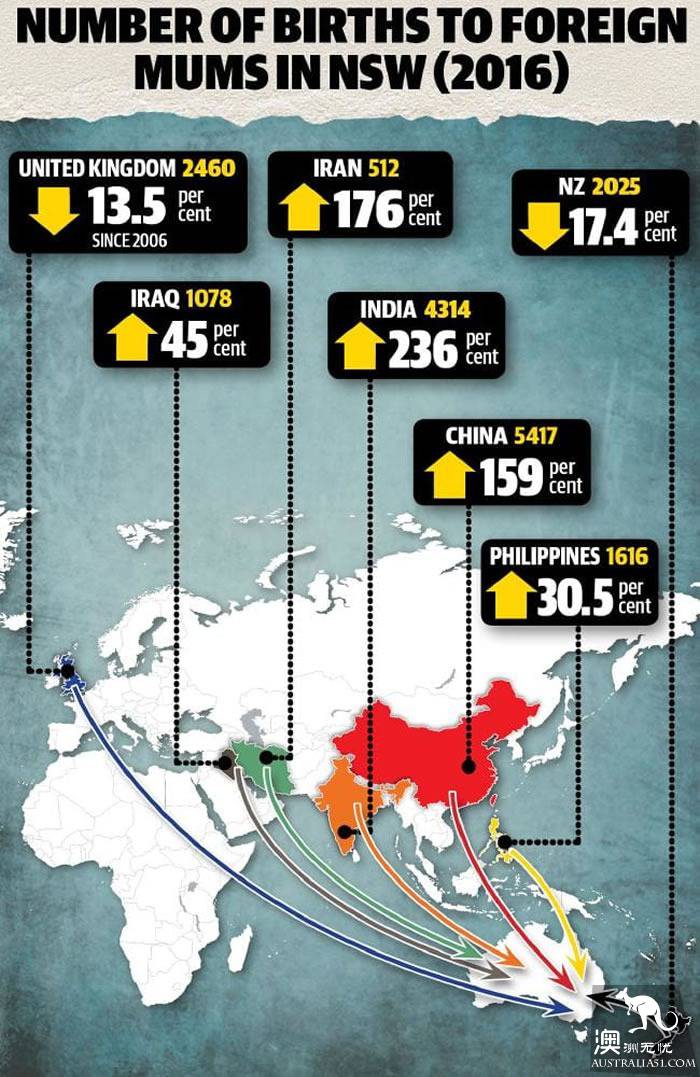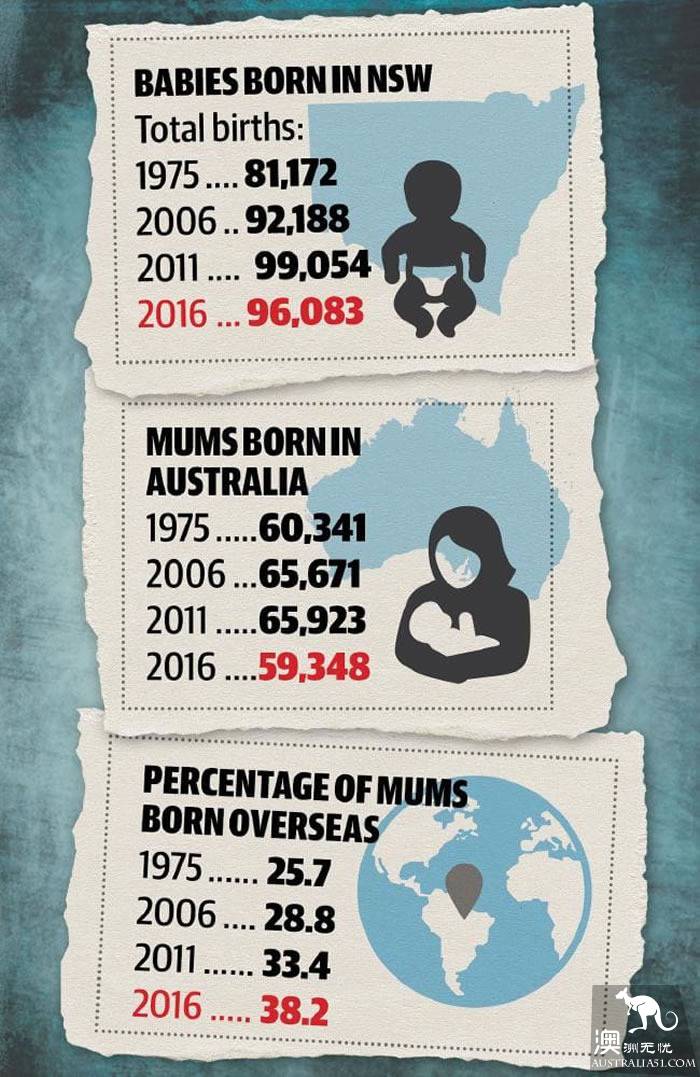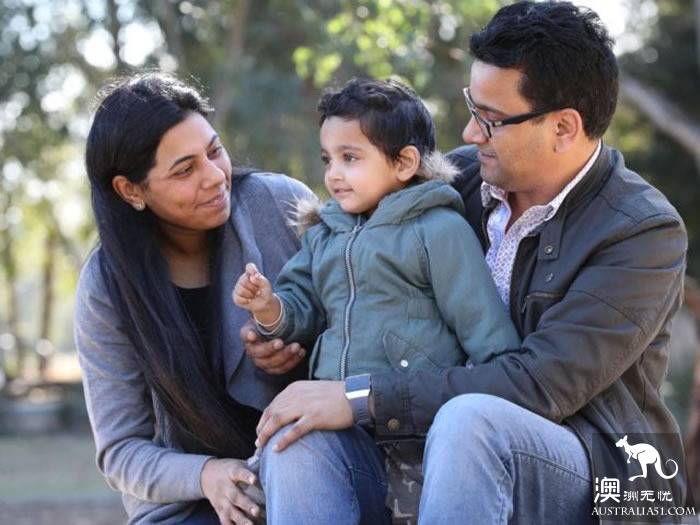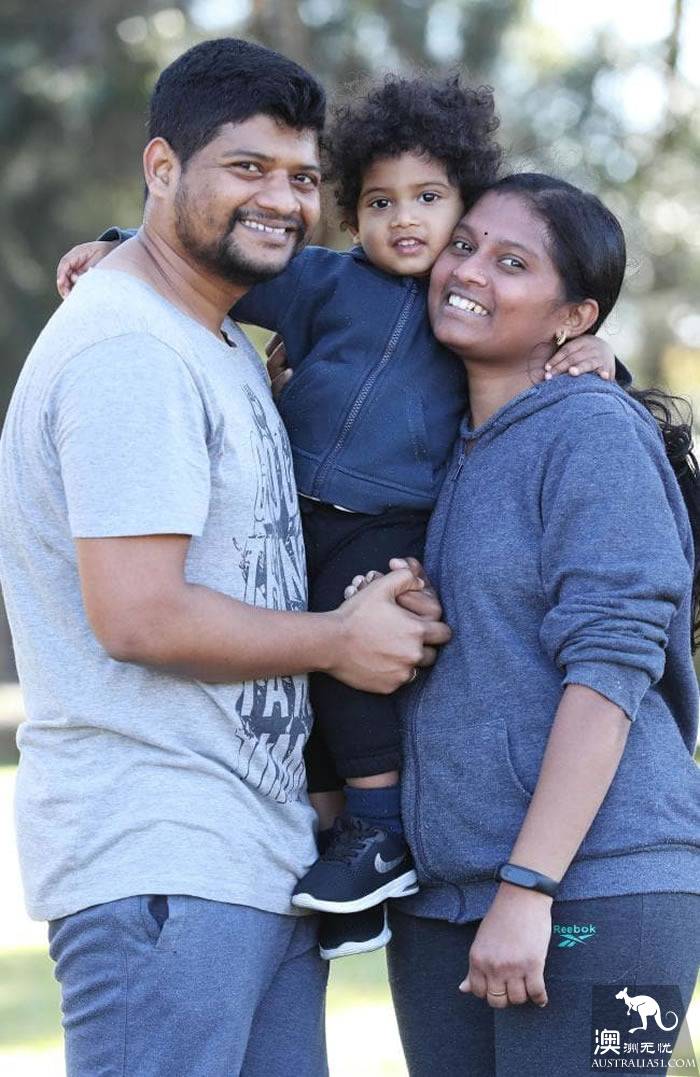More than 1/3 of new state-born babies are children of immigrant mothers, up 33% in just 10 years.
Data compiled for the Daily Telegraph show that 38.2 percent of babies born in the state are children of foreign-born mothers.
The number of Australian-born women has fallen to an all-time low, with the new state recording fewer than 60,000 babies a year.

The federal government is about to start a Senate census. Senator Smith (Dean Smith) of the Western Australian Liberal Party has put pressure on his colleagues to conduct a year-long survey of immigration quotas and where they should be resettled.
Figures show that 41 percent of mothers in Western Australia are born overseas-the highest percentage in Australia.
After the successful legalization of same-sex marriage, Smith has a record of pushing for controversial reforms within the Union.
Mothers from India and China are supporting the surge in immigrant mothers in new states, according to exclusive data from the Australian Bureau of Statistics (ABS).
Since 2006, the number of mothers born in India has increased by 236%, and the number of women born in China has increased by 159%.
During the same period, the number of mothers born in New Zealand and Britain declined.
The boom in immigrant mothers has been alarming since 2006, compared with a 12 percent gap between the two groups when the statistics were first collected in 1975.
The number of babies born to Australian women in the new state fell from 65923 in 2011 to an all-time low of 59348 in 2016-a drop of nearly 10 percent.
Social analyst David Chark (David Chalke) said the figures show that Australia is losing young white women and "not just replacing them with non-English-speaking mothers."

The fertility rate of Australian-born women fell from 1.88 children per woman in 2006 to 1.79 in 2016, but the fertility rate of immigrant women tends to be higher. In 2016, Lebanon had the highest fertility rate in Australia. An average of 4.03 children were born.
"in many immigrant groups, having a large number of children is more culturally appropriate-it's very culturally meaningful." "if the number of young women with a non-English background in the population is particularly high, they will have a higher fertility rate because they are just at childbearing age," Chalke said.
The average Australian woman usually has a child at the age of 30 and then continues to pursue professional achievement, Charlke said.
Bradley (Geoff Brailey), a social researcher at McCrindle, says people of childbearing age tend to leave the new state and move to other states to get bigger, more affordable housing if they can't find the right house.
Newman (Shayne Neumann), spokesman for labour migration and border protection, said any reform of Australia's immigration program "should improve its integrity and make the visa regime easier to understand."
The governor of the new state, Begillian (Gladys Berejiklian), declined to comment.

Westmead's father, Sharma (Deepak Sharma), 33, left India for NSW in 2010 to form a family with his wife, Ranjana (Ranjana). Their son, Ariane (Aaryan), was born in Sydney two years ago.
"Australia is a beautiful country. Sydney is a good place to raise children, "said Sharma."
Rawal (Rajhu Rawal), 31, a resident of West Sydney, and his 27-year-old wife, Somia (Sowmiya), left India two years ago to work in the new state. They now enjoy taking a walk with their 2-year-old son, Dashan (Darshan).
"We like this place. The environment and people here are beautiful. " He said。
